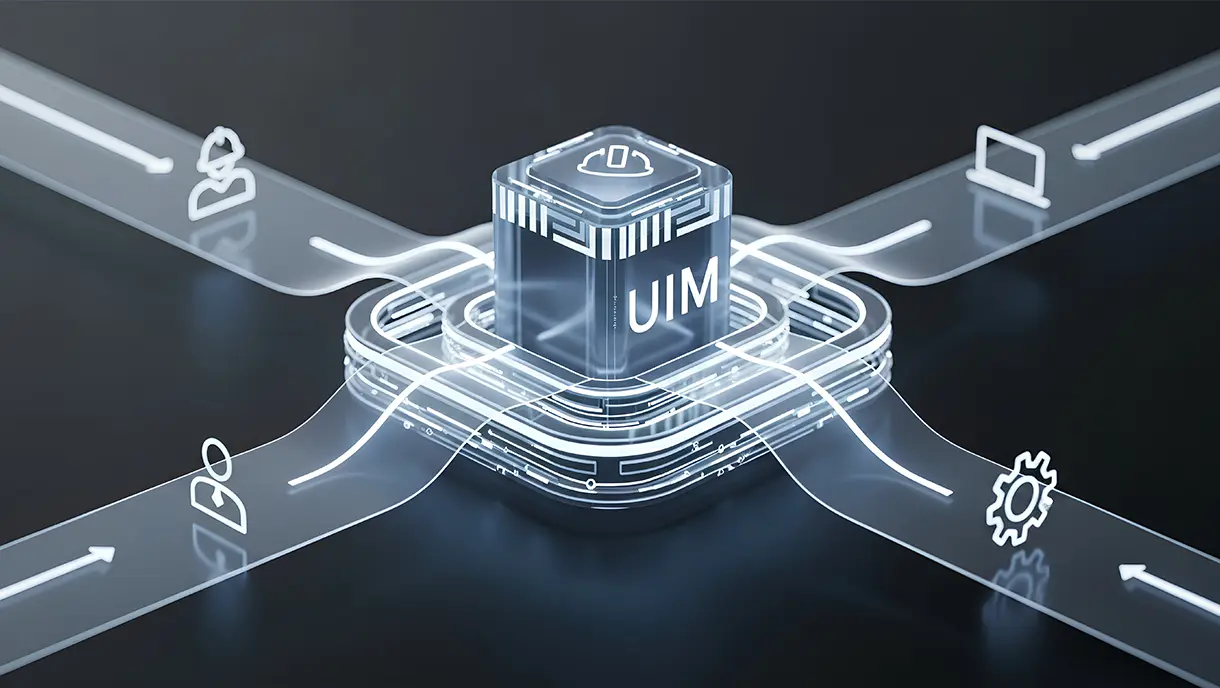Contactless Biometrics: The Future Of Secure And Hygienic Authentication
Struggling with hygiene risks, security vulnerabilities, and operational bottlenecks from traditional authentication systems? This guide explains how contactless biometrics solves these critical workplace challenges. Learn why leading organizations abandon touch-based fingerprint scanners for AI-powered facial recognition and palm vein technology.

What if your organization could verify every employee, visitor, or customer securely — without a single touch?
That’s precisely what contactless biometrics makes possible. Using advanced technologies like facial, iris, voice, or palm vein recognition enables identity verification without physical contact, enhancing both security and user convenience.
As organizations prioritize safety, speed, and operational efficiency, contactless biometrics is becoming a cornerstone of modern workplace authentication. The shift from touch-based systems to AI-powered, touch-free solutions reflects a growing need for hygiene, compliance, and automation in access control.
In this blog, we’ll explore what contactless biometrics is, how it works, its key benefits, and real-world applications across industries. We’ll also discuss the future trends shaping this technology and its adoption. Let’s get started.
What Is Contactless Biometrics?
Contactless biometrics refers to the use of advanced technologies to verify a person’s identity without requiring any physical touch or contact with a device. Unlike traditional biometric systems that rely on fingerprints or physical ID cards, contactless biometrics leverages unique physiological or behavioral characteristics, such as facial features, iris patterns, voice, or palm vein structures. to authenticate individuals seamlessly.
At its core, the technology combines AI, computer vision, and machine learning to capture and analyze biometric data remotely. Cameras or sensors identify and match these characteristics in real time, enabling fast and hygienic authentication without physical interaction.
According to Grand View Research, the global contactless biometrics market was valued at $17.5 billion in 2024 and is expected to reach $46.6 billion by 2030. This rapid expansion is part of a broader surge in biometric adoption, with the overall biometrics market projected to reach $267.05 billion by 2033 across all modalities including fingerprint, facial, iris, and voice recognition. The shift toward touchless methods reflects growing demand for hygienic, frictionless authentication solutions.
Touch-Based Biometrics vs Touchless Biometrics
While both touch-based and touchless biometric systems serve the same purpose, they differ significantly in how they operate, their hygiene levels, and the overall user experience. The table below highlights these key differences.
Now that you know how no-contact biometrics outshines the traditional contact-based biometrics, let’s explore the different methods of contactless biometrics.
Types Of Contactless Biometric Modalities
Modern contactless biometric systems leverage multiple authentication methods to meet diverse security and operational requirements. Organizations can select single or multi-factor approaches based on their security needs, user demographics, and environmental conditions.
1. Facial Recognition
Facial recognition is a contactless biometric technology that identifies or verifies individuals by analyzing unique facial features. Using AI and computer vision, it converts facial patterns into digital templates for secure, fast, and hygienic authentication across various applications.
Benefits of Facial Authentication
- Enables frictionless authentication while employees walk through entry points.
- Identifies multiple individuals in crowded spaces, such as building lobbies.
- Works effectively in varying lighting conditions.
- Processes authentication rapidly, ensuring smooth entry during peak hours.
- Integrates with access control systems for automatic entry.
2. Iris or Retina Recognition
Iris or retina recognition is a biometric method that identifies individuals by analyzing unique patterns in the iris or retina. Using near-infrared imaging, it captures stable iris or retinal details to enable highly secure, precise, and contactless authentication across sensitive environments.
Benefits of Iris or Retina Recognition
- Provides strong security for restricted or high-risk areas.
- Works where faces may be covered or obscured.
- Delivers consistent results regardless of age.
- Prevents fraud through liveness detection.
- Enables dual-eye capture for added protection.
3. Voice Recognition
Voice recognition analyzes unique vocal traits, such as pitch, tone, cadence, and speech patterns, to confirm identity. It works through standard microphones, smartphones, or dedicated audio devices and distinguishes live voices from recordings.
Benefits of Voice Recognition
- Enables remote authentication for mobile or field workers.
- Supports hands-free verification for employees with protective gear.
- Works across multiple languages and accents.
- Strengthens security using phrase-based challenges.
- Performs reliably in noisy environments with noise cancellation.
4. Palm Vein Scanning
Palm vein scanning is a contactless biometric technology that identifies individuals by mapping unique vein patterns beneath the skin using near-infrared light. It ensures high accuracy, hygiene, and security, making it ideal for healthcare, finance, and access control applications.
Benefits of Palm Vein Scanning
- Provides high accuracy with low error rates.
- Works regardless of skin conditions or external hand features.
- Maintains hygiene standards for healthcare and clean environments.
- Offers fast authentication for high-traffic operations.
- Protects privacy since vein patterns cannot be captured externally.
5. Gait Recognition
Gait recognition identifies individuals by analyzing walking patterns, stride, and body movement. It uses standard security cameras to create motion profiles without specialized hardware.
Real-Time Benefits of Gait Recognition
- Identifies individuals at greater distances than most biometrics.
- Authenticates people as they move naturally, without stopping.
- Enables passive security monitoring in public or open spaces.
- Works even when faces are obscured.
- Enhances security when combined with other biometric systems.
The variety of contactless biometric modalities allows organizations to match technology to their specific needs. Next, let’s explore the benefits of adopting contactless biometric authentication for workforce identity and access management.
[[cta]]
Benefits of Implementing Contactless Biometrics
Organizations implementing contactless biometrics gain powerful advantages that transform security operations while improving employee experiences. These systems deliver measurable improvements across fraud prevention, operational efficiency, and regulatory compliance.
1. Strengthens Security And Prevents Identity Fraud
Contactless biometrics eliminates credential sharing and buddy punching that plague traditional authentication systems. Biometric markers like facial features and palm veins cannot be transferred, copied, or guessed like PINs or passwords. Multi-factor combinations provide enterprise-grade security far exceeding traditional password systems.
2. Enhances Workplace Hygiene And Safety
Shared fingerprint scanners create contamination hotspots that facilitate disease transmission across workforces. Contactless systems eliminate these touchpoints, reducing infection risks critical for healthcare, food processing, and customer-facing environments.
This is especially useful for frontline workers in industries like healthcare and pharmaceuticals. A facial authentication platform purpose-built for frontline workers helps authenticate employees without removing gloves or protective equipment required.
3. Accelerates Access And Attendance Processes
Traditional authentication creates bottlenecks during shift changes when employees queue at time clocks and entry gates. Contactless biometric processes authenticate multiple users simultaneously, eliminating wait times even during peak periods. Speed improvements translate directly into productivity gains, as workers spend more time on tasks rather than waiting.
4. Improves User Convenience And Experience
Contactless authentication removes friction from daily workflows through natural, effortless verification that happens automatically. Employees no longer fumble for access cards, memorize PINs, or position fingers perfectly on sensors. The technology works seamlessly with masks, gloves, and protective equipment required in many industries.
5. Simplifies System Integration And Management
Modern contactless biometric platforms integrate with existing access control systems through open APIs and standard protocols. Cloud-based management consoles provide centralized administration across multiple locations without requiring extensive on-site IT staff. Organizations reduce the total cost of ownership by eliminating the costs of physical credential production, distribution, and replacement.
6. Ensures Compliance And Data Protection
Contactless biometric systems help organizations meet data protection regulations, including GDPR, CCPA, and HIPAA, through advanced encryption. Systems protect biometric templates both in transit and at rest, preventing unauthorized access. Immutable audit trails document every authentication attempt, supporting compliance reporting and forensic investigations.
These comprehensive benefits explain why contactless biometrics adoption is accelerating across industries, from manufacturing to healthcare. Moving forward, let’s explore how no-contact biometrics is being used across different sectors and how it benefits them.
[[cta-2]]
Real-World Applications of No-Contact Biometric Authentication In Different Industries
Contactless biometric authentication delivers transformative value across diverse sectors facing unique security and efficiency challenges. Organizations implement these systems to solve operational problems while modernizing identity verification infrastructure. The following applications demonstrate measurable improvements across industries.
1. Manufacturing
By implementing face recognition login for manufacturing facilities, organizations can manage restricted zone access, monitor employee attendance, and verify operator authorization for machinery in high-risk environments.
- Eliminates time theft by preventing buddy punching schemes.
- Controls access to dangerous equipment, significantly reducing workplace accident rates.
- Functions reliably in industrial environments with dust and contamination.
- Tracks workforce attendance accurately across multiple shift rotations daily.
2. Healthcare Facilities
Healthcare organizations deploy contactless biometrics for patient identification and staff access control while maintaining strict hygiene protocols to prevent the transmission of infections through shared devices.
- Reduces medical errors by ensuring accurate patient-provider matching during treatment.
- Prevents unauthorized entry to operating rooms, pharmacies, and data centers.
- Enables staff authentication without removing gloves or touching contaminated surfaces.
- Document access attempts for regulatory compliance and security audit requirements.
3. Retail
Retail businesses implement contactless biometrics for customer authentication, secure payments, and personalized shopping experiences, thereby strengthening fraud prevention while simplifying transactions.
- Enables customers to check out without cards, phones, or wallets.
- Verifies age for restricted products without requiring physical ID inspection.
- Reduces payment fraud by verifying biometrics at the point of sale.
- Accelerates checkout times during peak shopping periods and holiday rushes.
4. Pharmaceuticals
Pharmaceutical companies use contactless biometrics to secure access to R&D laboratories and cleanrooms while maintaining compliance with FDA, DEA EPCS, and GMP requirements.
- Protects intellectual property by verifying access to research facilities.
- Maintains cleanroom contamination standards without introducing physical card readers.
- Provides tamper-proof access records required for regulatory inspections and audits.
- Controls entry to controlled substance storage, meeting strict DEA regulations.
5. Corporate Workplaces And Enterprises
Corporate offices implement contactless biometrics for employee attendance tracking and secure facility access, streamlining entry processes that previously required ID badges or security verification.
- Eliminates security incidents from lost, stolen, or shared access cards.
- Authenticates employees seamlessly at building entrances and secure conference rooms.
- Manages visitor access for pre-registered guests via automatic facial recognition.
- Reduces authentication time during peak entry periods in high-rise buildings.
6. Airports And Transportation Hubs
Airports deploy contactless biometrics for passenger verification, using advanced algorithms that enhance security while improving the traveler experience through faster processing.
- Verifies passenger identity without presenting physical documents at multiple checkpoints.
- Accelerates customs and immigration processing through automated verification systems.
- Strengthens security by preventing identity fraud at transportation access points.
- Improves passenger throughput during high-traffic periods at major international airports.
These contact-free biometric use cases redefine how organizations across industries authenticate their workforce. However, implementing this authentication method comes with its own challenges and considerations. The coming section highlights these challenges.
Common Challenges in Implementing Contactless Biometrics and How to Overcome Them
While contactless biometrics offers significant advantages, organizations must navigate several implementation challenges to ensure successful deployment.
1. Privacy And Data Protection Concerns
Organizations face legitimate concerns about collecting and storing sensitive biometric data that cannot be changed if compromised. Regulatory frameworks such as GDPR and CCPA impose strict requirements for the handling of biometric data, with significant penalties for violations. These privacy concerns can create employee resistance and slow adoption despite clear operational benefits.
How to Overcome This Challenge
- Implement end-to-end encryption for all biometric templates, both in transit and at rest.
- Store biometric data as mathematical templates rather than actual images to prevent reconstruction.
- Maintain transparent privacy policies explaining what data is collected, how it's used, and who has access.
- Conduct regular privacy impact assessments and third-party audits to validate compliance with regulations.
2. Implementation Costs And Infrastructure
Contactless biometric systems require significant upfront investment in specialized cameras, sensors, processing servers, and network infrastructure. Legacy access control systems may need complete replacement rather than simple upgrades. Small and medium businesses particularly struggle justifying costs despite recognizing security benefits.
How to Overcome This Challenge
- Start with pilot deployments in high-value areas to demonstrate ROI before full-scale rollouts.
- Choose cloud-based SaaS platforms that minimize hardware requirements and spread costs through subscriptions.
- Calculate the total cost of ownership, including eliminated expenses for card production and replacement.
- Implement phased deployment strategies that spread costs over multiple fiscal years while delivering value.
3. Accuracy In Varied Environments
Contactless biometric accuracy is affected by challenging environmental conditions, including variable lighting, camera positioning, and physical obstructions. Masks, glasses, hats, and facial hair changes can reduce authentication success rates and frustrate users. Organizations worry about false rejections that lock out authorized users and false acceptances that compromise security.
How to Overcome This Challenge
- Deploy multispectral cameras that combine visible and infrared light with 3D imaging to operate across a range of lighting conditions.
- Implement adaptive algorithms that learn from authentication patterns and continually improve accuracy.
- Use multi-factor biometric combinations, such as face plus palm vein, to maintain accuracy when individual methods reach their limits.
- Conduct comprehensive enrollment capturing biometric data under various conditions, including glasses and masks.
4. Ethical And Social Acceptance
Public skepticism about biometric surveillance, algorithmic bias, and monitoring creates resistance to the deployment of contactless authentication. Employees fear constant tracking and privacy invasion beyond legitimate security requirements. Historical biases in facial recognition algorithms are particularly concerning for organizations with diverse workforces spanning different ethnicities, ages, and genders.
How to Overcome This Challenge
- Communicate clearly that systems authenticate identity only at entry points rather than providing continuous surveillance.
- Select vendors committed to bias testing across diverse populations and publishing independent accuracy results.
- Involve employee representatives and privacy advocates in planning processes to address concerns before deployment.
- Implement strict data governance policies that limit the use of biometric data to authentication only, with no secondary purposes.
Addressing these challenges proactively ensures smooth deployment and maximizes the return on your contactless biometrics investment.
[[cta-3]]
Step Into Next-Gen Contactless Identity Verification with OLOID
Contactless biometrics is no longer just an innovation; it’s a key enabler of secure, hygienic, and frictionless identity verification. By eliminating the need for physical touchpoints, organizations can reduce hygiene risks, enhance user convenience, and strengthen access security, all while improving operational efficiency.
OLOID’s passwordless authentication platform is leading this transformation with its advanced, AI-driven contactless biometric solution purpose-built for frontline workers. OLOID leverages facial recognition, palm vein, and mobile-based authentication to deliver fast, secure, and privacy-first access across physical and digital environments.
Whether it’s modernizing workplace entry, integrating with existing systems, or moving toward a passwordless future, OLOID empowers enterprises to embrace identity verification that’s truly touch-free and future-ready.
Take the next step in your digital transformation journey. Request a demo today to see how OLOID can help your organization achieve seamless, contactless identity verification that’s built for the modern workplace.
Frequently Asked Questions on No-Contact Biometrics
1. What are the main types of contactless biometric systems?
The primary contactless biometric modalities include facial recognition, iris scanning, voice recognition, palm vein authentication, and gait analysis. Each method captures unique human characteristics without requiring physical contact with sensors or devices. Organizations typically select technologies based on specific security requirements, environmental conditions, and user demographics.
2. How does contactless biometrics compare to touch-based biometrics?
Contactless biometrics eliminates physical touchpoints that pose hygiene risks and create operational bottlenecks in traditional fingerprint- and card-based systems. Touch-based methods require deliberate user actions, such as placing a finger on a scanner or swiping a card, which slow down authentication. Environmental factors such as dirty sensors, worn fingerprints, and damaged cards often cause authentication failures in traditional systems.
Contactless technologies authenticate users while they walk naturally through entry points without stopping or removing gloves and protective equipment. The systems process multiple authentications simultaneously, eliminating queues during peak traffic periods that plague touch-based installations. Accuracy remains consistent regardless of skin conditions, hand injuries, or environmental factors affecting traditional fingerprint recognition.
3. Are contactless biometric systems safe and secure?
Modern contactless biometric systems implement multiple security layers, including liveness detection, encryption, and anti-spoofing algorithms that prevent fraud attempts. Liveness detection ensures authentication uses actual live biometric markers rather than photos, masks, or recordings.
Advanced encryption protects biometric templates both during transmission and storage, preventing unauthorized access even if systems are breached. Multi-factor combinations provide exceptional security, far exceeding the protection offered by passwords or access cards. Reputable vendors comply with data protection regulations, including GDPR and CCPA, through privacy-by-design approaches and transparent data-handling practices.
4. How do contactless biometrics improve workplace hygiene?
Here are a few ways in which no-contact biometrics improve workplace hygiene:
- Eliminates shared touchpoints on fingerprint scanners and card readers that facilitate the spread of disease.
- Enables authentication without removing the glove, which is required for safety or contamination control in sensitive environments.
- Reduces surface sanitization requirements by eliminating high-touch authentication devices.
- Maintains access control effectiveness during health crises when touch-based systems create unacceptable infection risks.
- Supports cleanroom and sterile-environment protocols by preventing contamination from traditional authentication hardware.
5. Can contactless biometric systems be integrated with existing infrastructure?
Yes, modern contactless biometric platforms integrate seamlessly with existing access control systems, time-and-attendance software, and enterprise identity management solutions. Open APIs and standard protocols enable connections to LDAP, Active Directory, SAP, Workday, and other common enterprise platforms without custom development.
6. How do I choose the right contactless biometric solution for my organization?
Start by defining your specific requirements, including security levels, throughput demands, environmental conditions, and integration needs. Evaluate vendors based on proven performance in similar environments rather than theoretical specifications or marketing claims.
Critical selection factors include:
- Authentication accuracy and speed under your specific environmental conditions and user demographics.
- Integration capabilities with your existing access control, HR, and identity management systems.
- Deployment flexibility supporting single-site pilots through global multi-location rollouts.
- Data privacy and security features meet relevant regulatory compliance requirements.
- Total cost of ownership, including hardware, software licensing, deployment services, and ongoing support.






Get the latest updates! Subscribe now!




